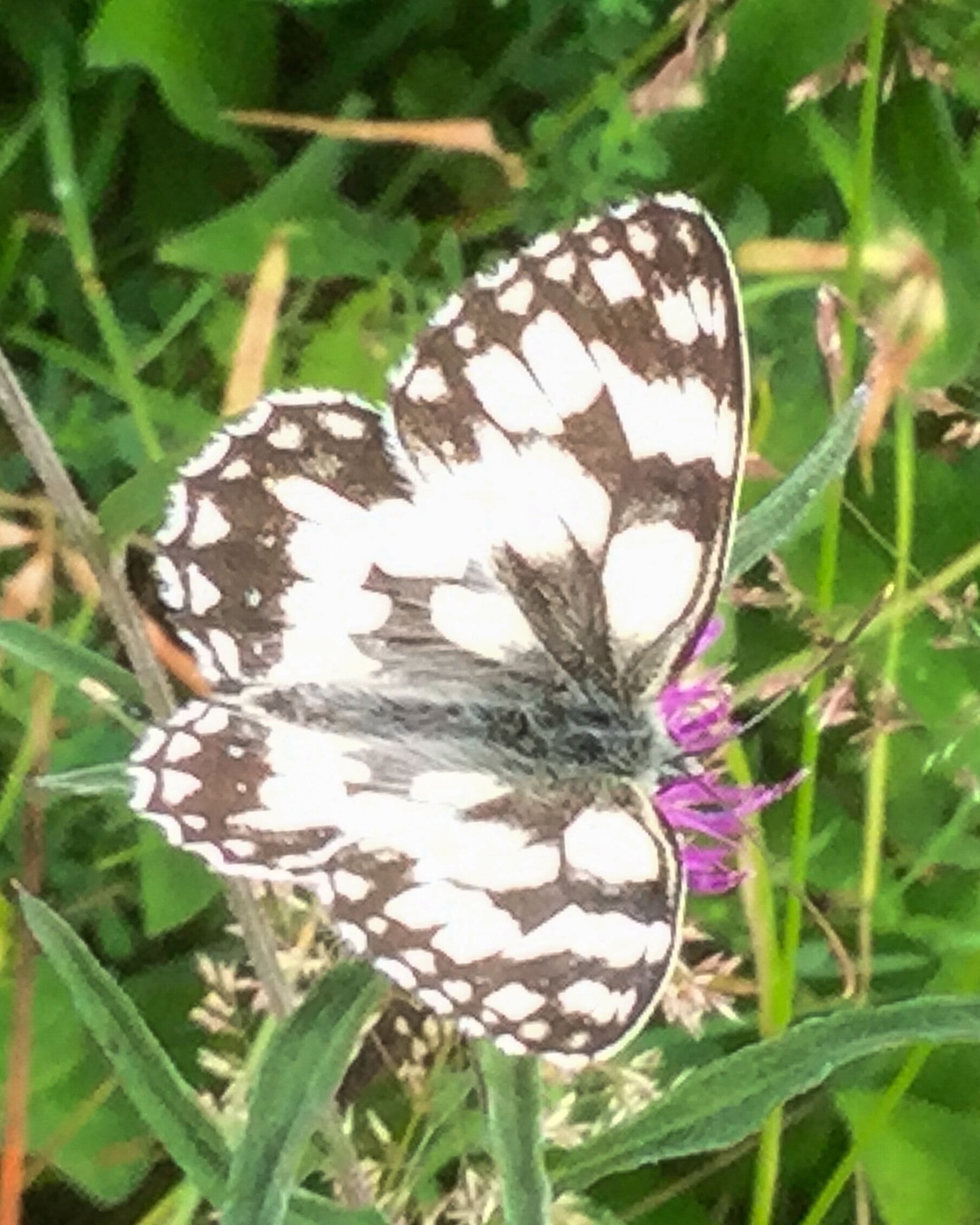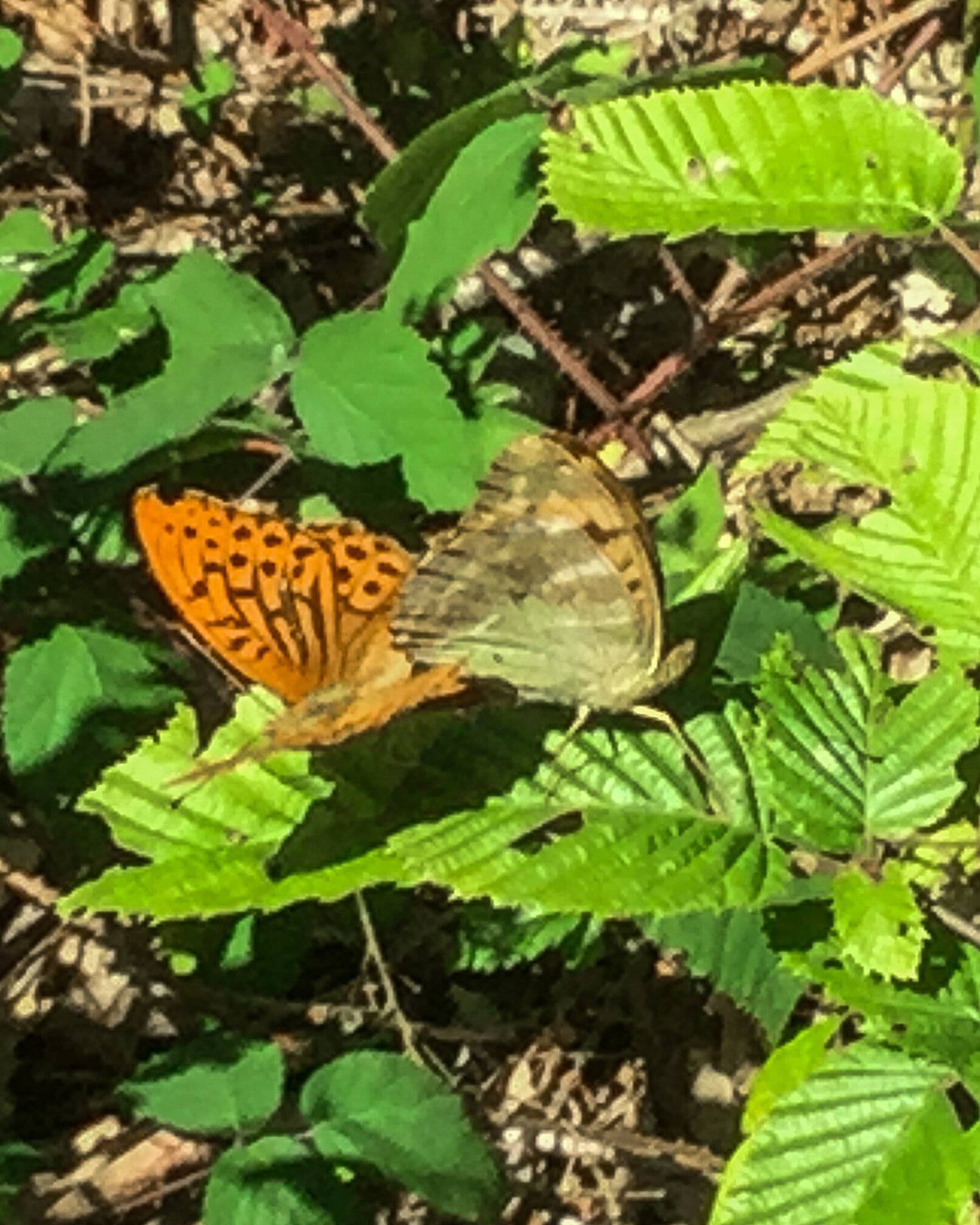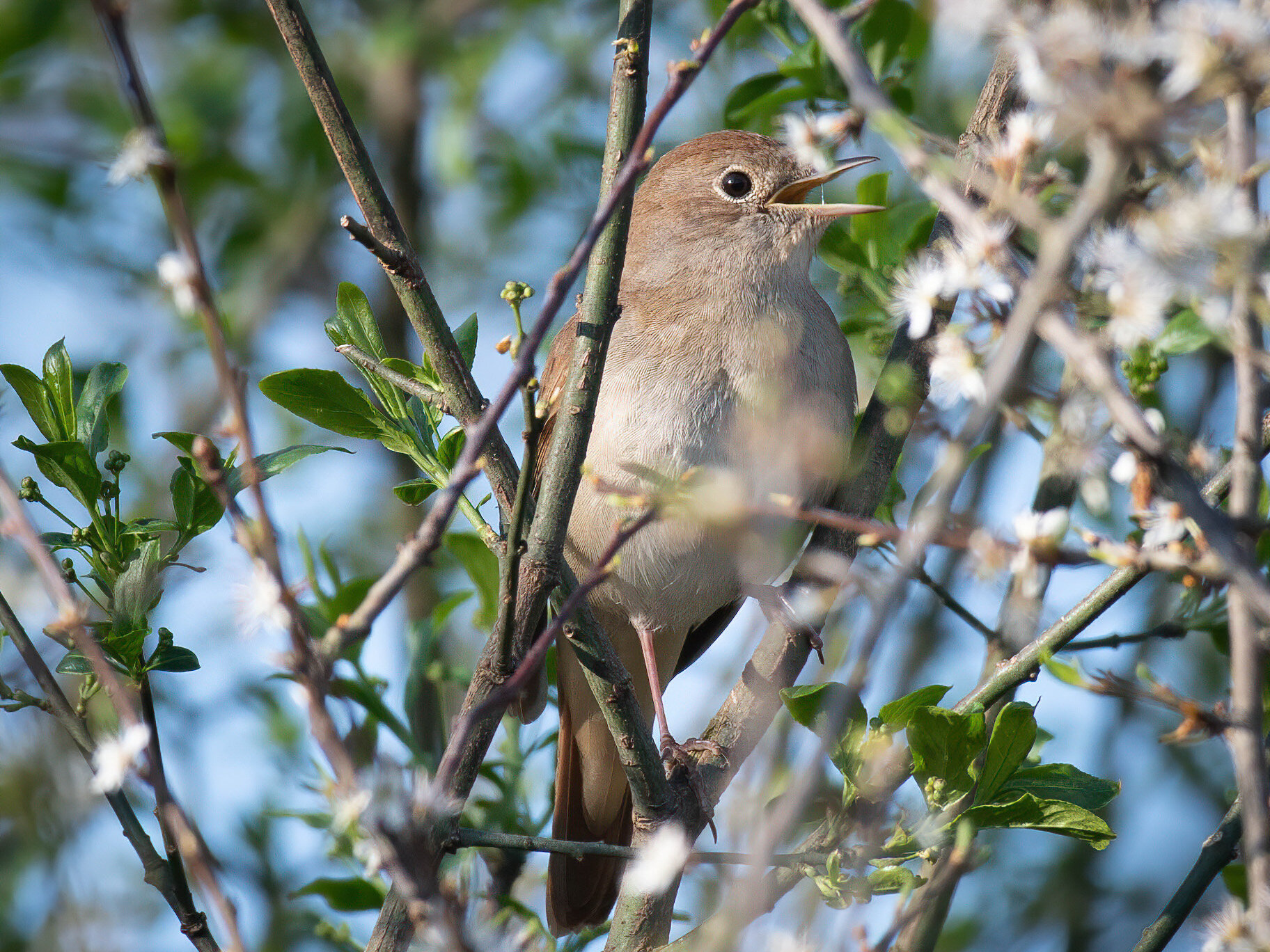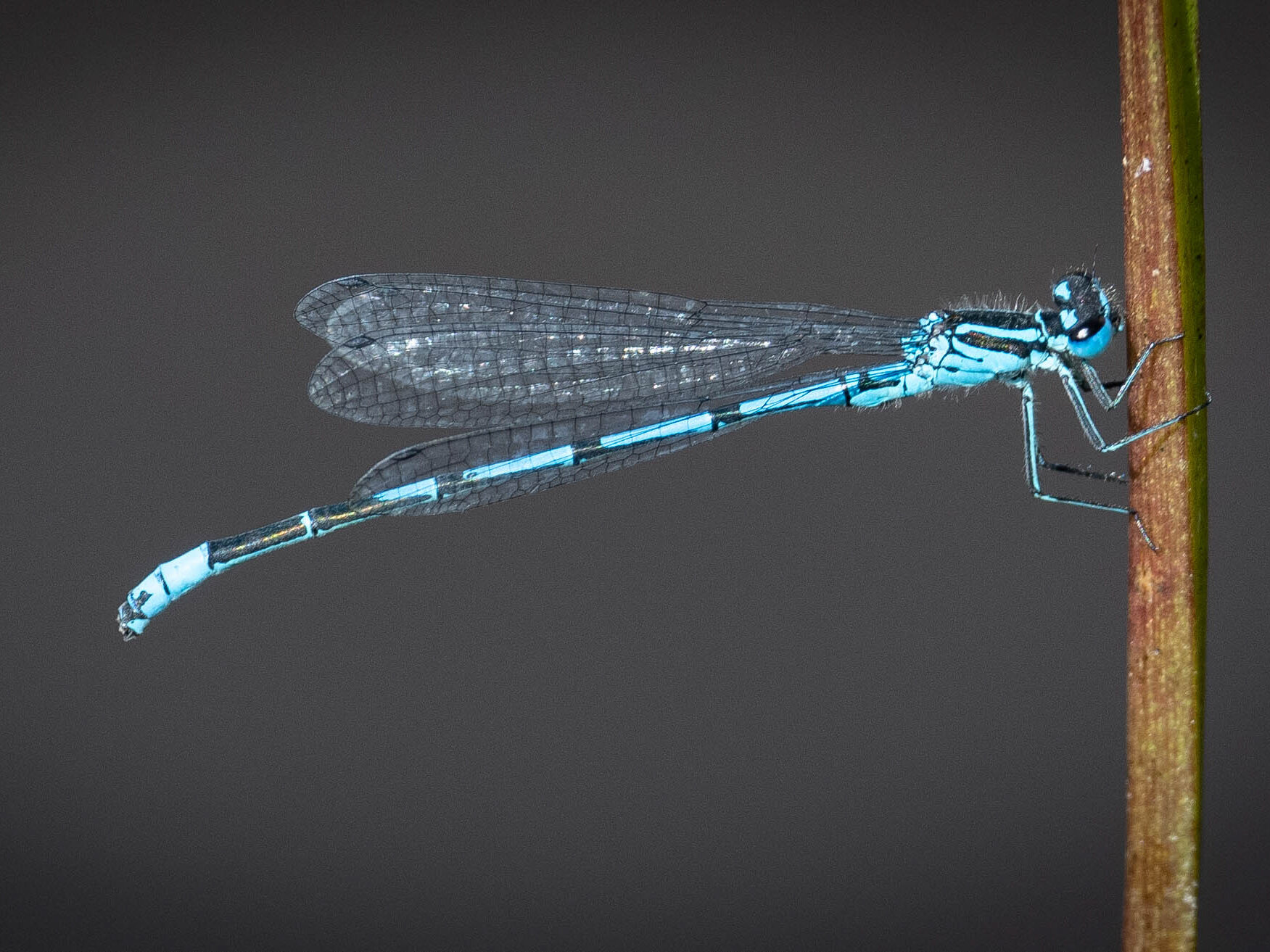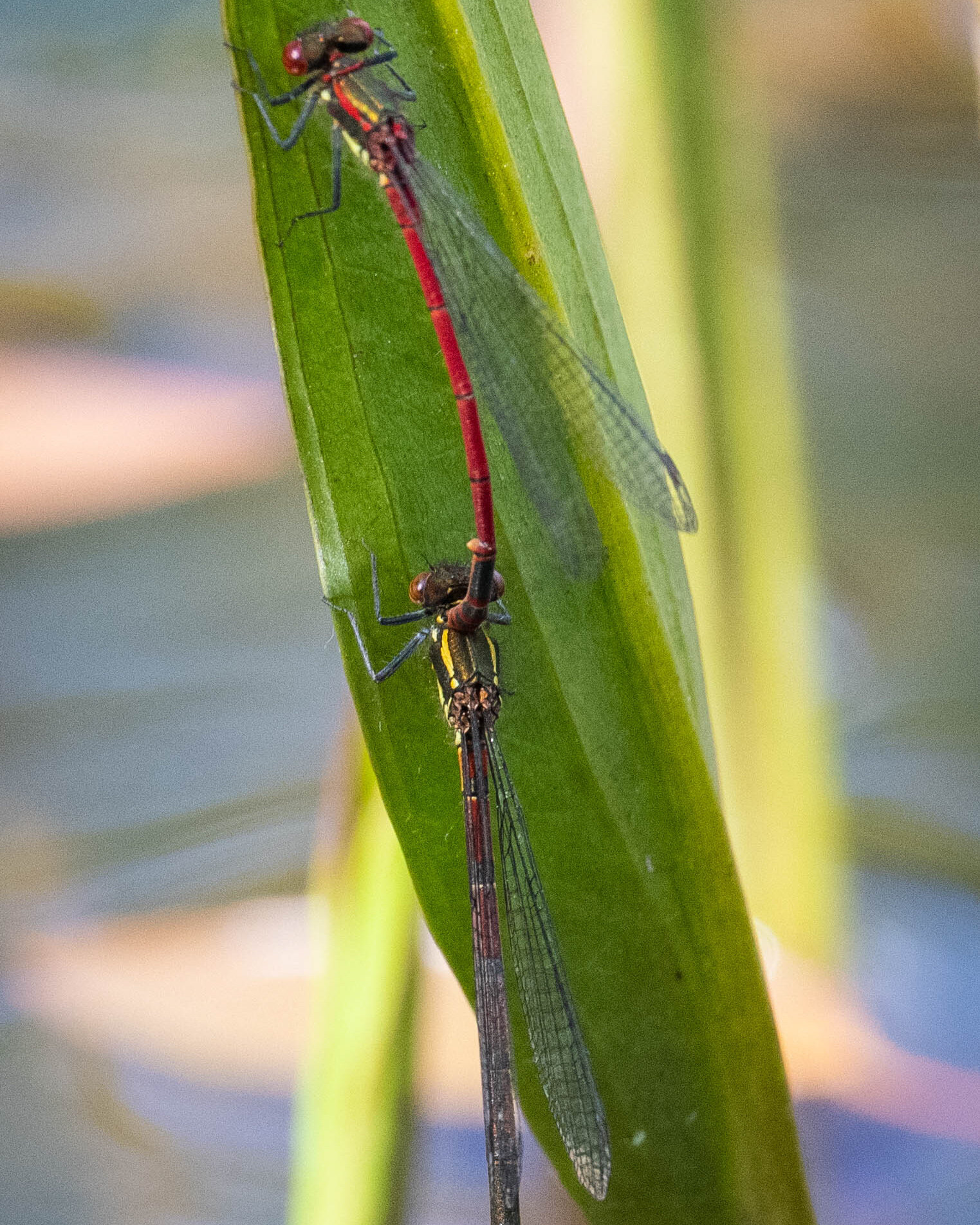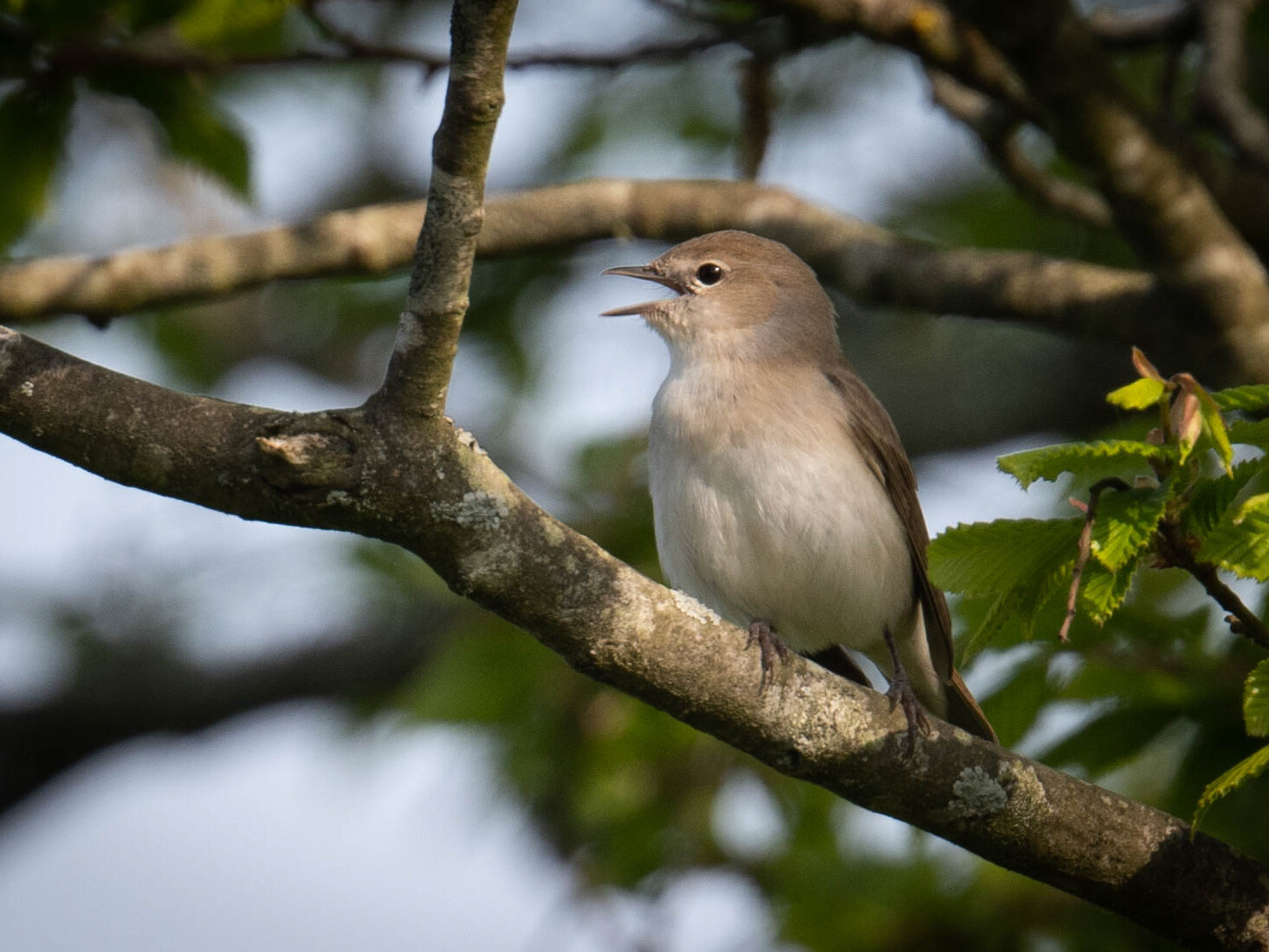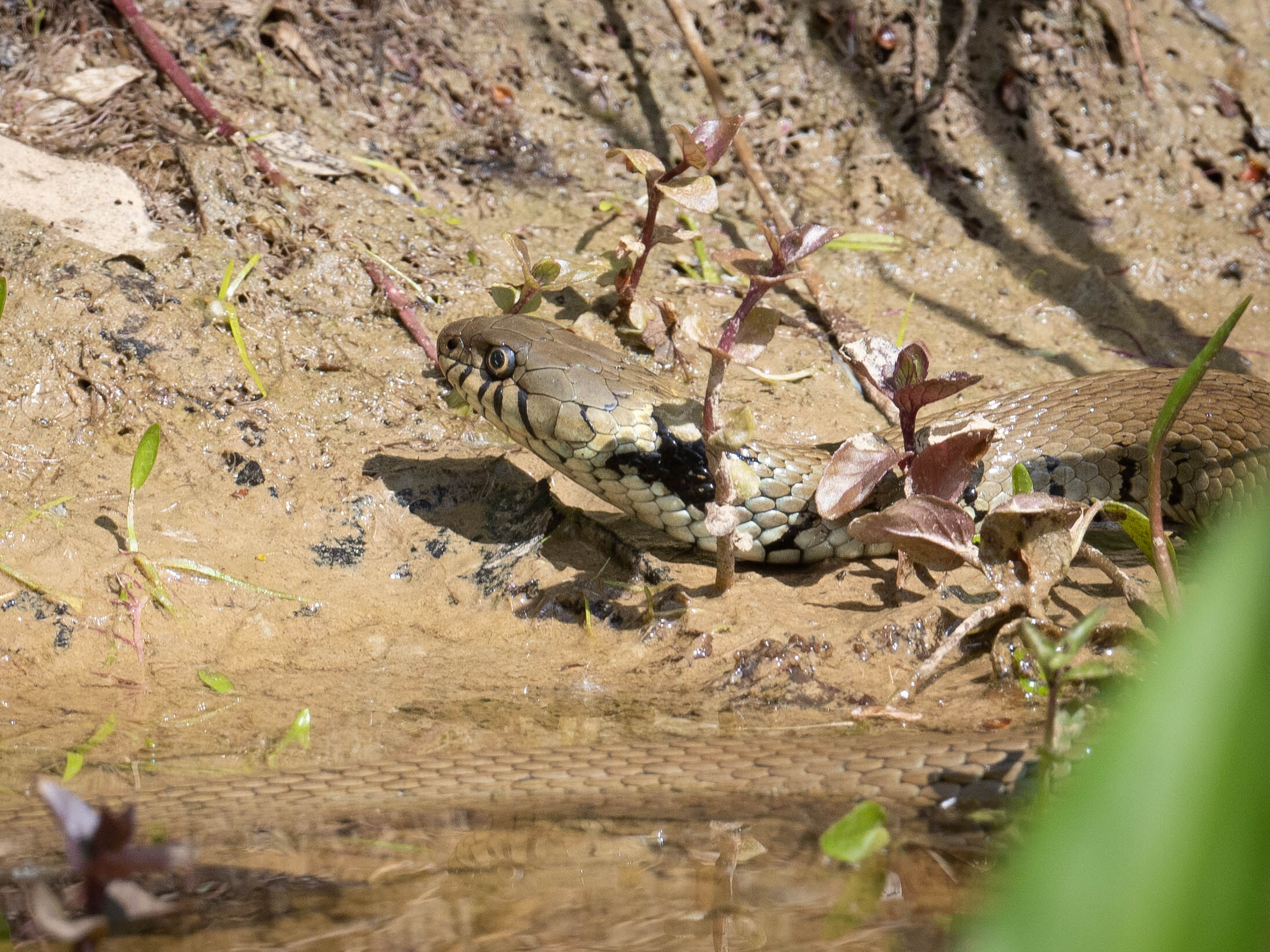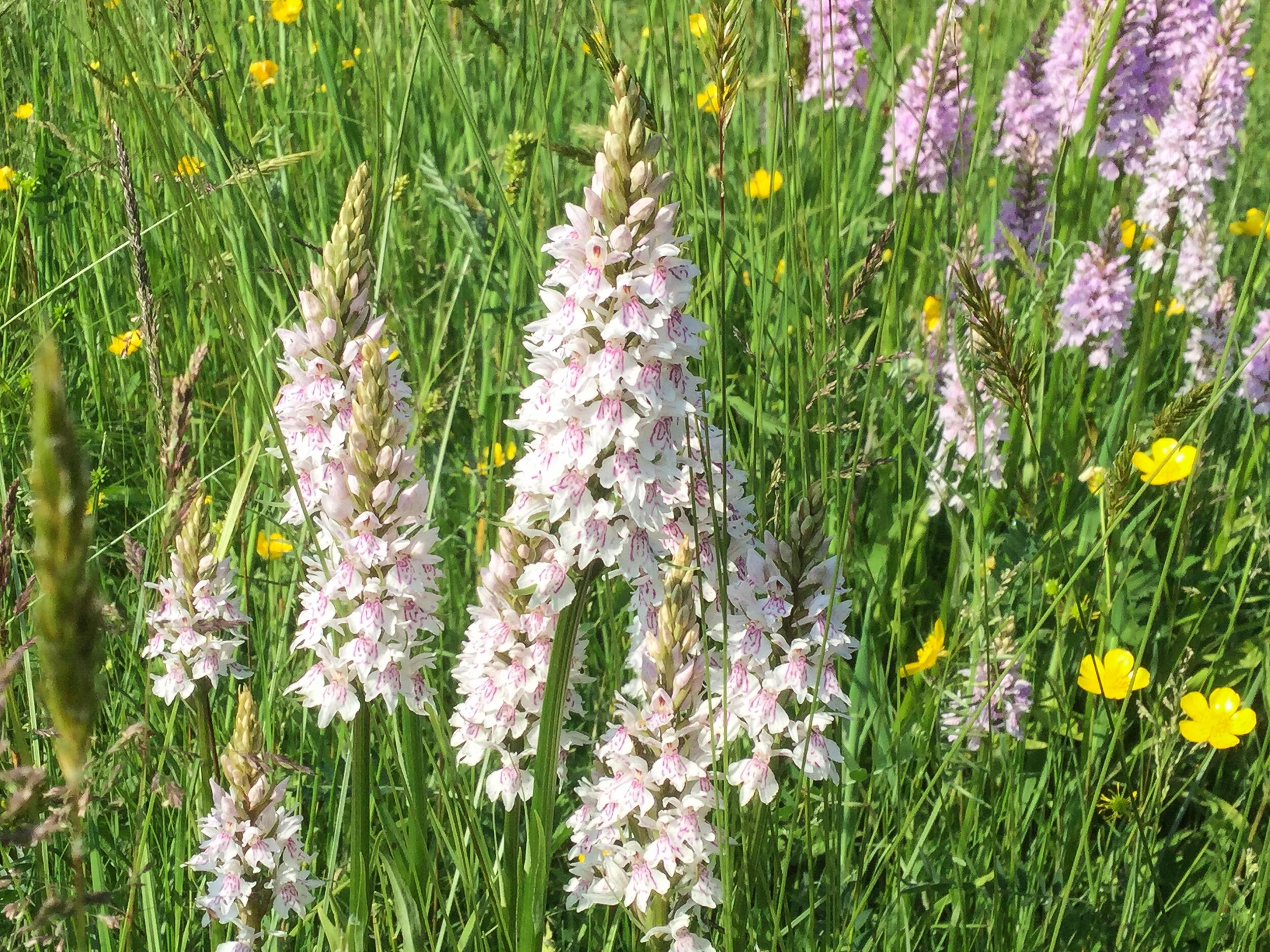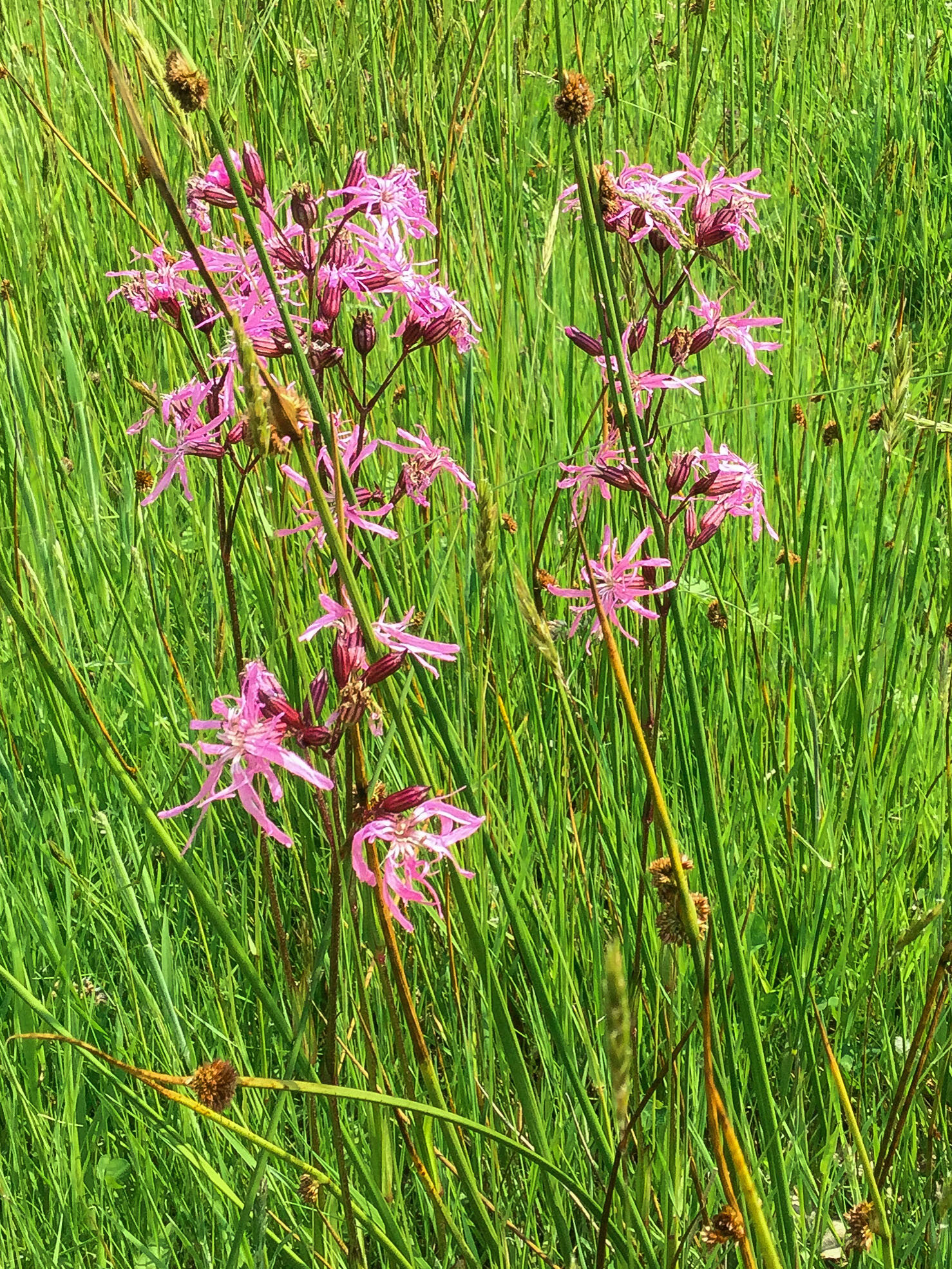
Our Rare & Endangered Species
Creatures in decline across the South East have found a haven at Moat Farm.
Our Wildlife.
Alongside our longhorn cattle and sheep who borrow our farm for grazing, we have Turtle Doves, 23 Nightingale territories, several pairs of breeding barn owl, tawny owl, kestrels, warblers and finches. We have recently found not only wild honey bees and bumble bees but also rare Long-horned bees foraging in our field-edge brambles. Grass snakes and slow worms are regularly seen, along with great crested newt and toads in the early spring. We have noted 26 species of butterfly around the farm and its woodlands to date. Marbled White are numerous alongside Ringlet, Meadow Browns, Small Coppers, Blues and Skippers. Grizzled Skippers were seen regularly until the last two summers giving rise to concern. Purple Hairstreak can be found in the tops of the oak trees. Other woodland butterflies include Silver Washed Fritillary and White Admiral. Dormice and Harvest Mice are regularly encountered. Photos: Richard Pettett
Chiffchaff - ©Richard Pettett
Kestrel and Vole - ©Richard Pettett
Red Kite - ©Richard Pettett
Painted Lady
Marbled White
Silver Washed Fritillary mating
Red Admiral
Common Blue - ©Jesse Bax
Nightingale - ©Richard Pettett
Kestrel with young - ©Richard Pettett
Swallow - ©Richard Pettett
Male Emperor - ©Richard Pettett
Four Spot Chaser - ©Richard Pettett
Blue Tailed Damselfly - ©Richard Pettett
Small Red Damselfly - ©Richard Pettett
Kestrel hunting - ©Richard Pettett
Garden Warbler - ©Richard Pettett
Pied Wagtail - ©Richard Pettett
Grass Snake - ©Richard Pettett
Downy Emerald Dragonfly - ©Richard Pettett
Barn Owl
Marbled White

“Our 300 acres of untouched meadows and ancient woodland have become a haven of exciting wildlife and nature.”
— Jan Bax
Wild flowers.
Our wildflowers include Common Spotted Orchid together with significant numbers of Sedges, Bugle, Trefoils and Vetches. Yellow Rattle has also rapidly reestablished and there is abundant Knapweed, Fleabane, and other high nectar producing plants which host clouds of butterflies on hot summer days. We also have Green-Winged Orchid and Adder’s Tongue Fern. Early Purple orchids are also seen in small colonies across the farm and woodland, and Tormentil (favoured by Turtle Doves). Other plants of interest include Devil’s Bit Scabious, Meadow Vetchling, Pepper Saxifrage, Tufted Vetch, Agrimony and Cow Wheat. Water quality is indicated by the presence of Three Lobed Water Crowfoot and Water Violet.

“Our business celebrates, protects and understands the precious landscape it operates in.”
— Jesse Bax




